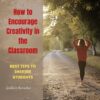
Year: 2022
Subscriber Special: Discount Summer Tech Camp
Every month, subscribers to our newsletter get a free/discounted resource to help their tech teaching.
May 9-11th
Summer Tech Camp Survival Kit
From Ask a Tech Teacher
Are you teaching a Summer Tech Camp to Kids? We have the solution:
Build Your Own Adventure
$230 value for $179
Share this:
- Click to share on Facebook (Opens in new window) Facebook
- Click to share on X (Opens in new window) X
- Click to share on LinkedIn (Opens in new window) LinkedIn
- Click to share on Pinterest (Opens in new window) Pinterest
- Click to share on Telegram (Opens in new window) Telegram
- Click to email a link to a friend (Opens in new window) Email
- More
Music for Armed Forces Day
Many Americans celebrate Armed Forces Day annually on the third Saturday of May. It is a day to pay tribute to men and women who serve the United States’ armed forces. Armed Forces Day is also part of Armed Forces Week, which begins on the second Saturday of May.
[youtube https://www.youtube.com/watch?v=QyKfr8G04Qc&w=560&h=315] [youtube https://www.youtube.com/watch?v=OI-_wAX1tV8&w=560&h=315]Jacqui Murray has been teaching K-18 technology for 30 years. She is the editor/author of over a hundred tech ed resources including a K-12 technology curriculum, K-8 keyboard curriculum, K-8 Digital Citizenship curriculum. She is an adjunct professor in tech ed, Master Teacher, webmaster for four blogs, an Amazon Vine Voice, CSTA presentation reviewer, freelance journalist on tech ed topics, contributor to NEA Today, and author of the tech thrillers, To Hunt a Sub and Twenty-four Days. You can find her resources at Structured Learning.
Share this:
- Click to share on Facebook (Opens in new window) Facebook
- Click to share on X (Opens in new window) X
- Click to share on LinkedIn (Opens in new window) LinkedIn
- Click to share on Pinterest (Opens in new window) Pinterest
- Click to share on Telegram (Opens in new window) Telegram
- Click to email a link to a friend (Opens in new window) Email
- More
Happy Mother’s Day!
 Mother’s Day in the United States is annually held on the second Sunday of May. This year, that’s May 11th. It celebrates motherhood and it is a time to appreciate mothers and mother figures. Many people give gifts, cards, flowers, candy, a meal in a restaurant or other treats to their mother and mother figures, including grandmothers, great-grandmothers, stepmothers, and foster mothers.
Mother’s Day in the United States is annually held on the second Sunday of May. This year, that’s May 11th. It celebrates motherhood and it is a time to appreciate mothers and mother figures. Many people give gifts, cards, flowers, candy, a meal in a restaurant or other treats to their mother and mother figures, including grandmothers, great-grandmothers, stepmothers, and foster mothers.
- Mother’s Day activities
- Mother’s Day Activities from
- Mother’s Day cards
- Mother in different languages
- Mother’s Day Quotes
- Mother’s Day Sayings
- Mother’s Day Templates from Canva
Anyone have some favorite websites to share? My list isn’t terribly robust.
Enjoy your day with your children!
Share this:
- Click to share on Facebook (Opens in new window) Facebook
- Click to share on X (Opens in new window) X
- Click to share on LinkedIn (Opens in new window) LinkedIn
- Click to share on Pinterest (Opens in new window) Pinterest
- Click to share on Telegram (Opens in new window) Telegram
- Click to email a link to a friend (Opens in new window) Email
- More
#CUE22 and Trending Edtech
If you attend edtech conferences, you know how motivating, energizing, and forward-thinking they are. I always come away feeling ready to use the latest and best edtech tools in my lesson plans. Ask a Tech Teacher contributor, Christian Miraglia, attended Spring CUE 22 in Palm Springs, California. Here are some of the great ideas he collected from colleagues and presenters:
#CUE22 and Trending Edtech
Conferences always bring new ideas, energy for changes in instructional practices, and new networking opportunities. I recently attended the Spring CUE 22 conference in Palm Springs, in which over two thousand educators gathered to share ideas, connect and view the latest in education technology. The CUE (Computer Users in Education) conference is the highlight event for California educators using technology. Much of the presentations indicated that changes are happening in classrooms spurred by the pandemic. Being that there were many topics of importance this post will focus on student agency with later posts focusing on feedback, E-Sports, and assessments.
Share this:
- Click to share on Facebook (Opens in new window) Facebook
- Click to share on X (Opens in new window) X
- Click to share on LinkedIn (Opens in new window) LinkedIn
- Click to share on Pinterest (Opens in new window) Pinterest
- Click to share on Telegram (Opens in new window) Telegram
- Click to email a link to a friend (Opens in new window) Email
- More
Encourage Creativity in the Classroom
“Eighty-seven percent of teachers and 77% of parents agree teaching that inspires creativity has a bigger payoff for students”
This according to Gallup research (To read more of the report, click here). No one is surprised by this. Teachers and parents have long known that if students are engaged, they learn faster and remember more.
Our Ask a Tech Teacher crew has some interesting thoughts on mainstreaming this in your classroom:
How to Encourage Creativity in the Classroom: Best Tips to Inspire Your Students
Kids don’t go to school just to learn classical subjects such as history, math, or geography. They also need to understand how to be social, how to create connections, and how to develop their creativity. 
Plus, in the current work environment, creativity is considered the skill of the future and many employers devise training sessions to help their employees think outside the box. So why not start at an early age, when the brain is more eager to learn and creative pathways easier to forge?
Also, in today’s day and age, teachers can use a wide range of tech tools to connect with and inspire their students. Now, if you’ve run out of ideas, here are a few tips (with and without technology) to help your students embrace their creative side.
Use Fun Tools
Have you ever thought about using 3D printing to help students express their creativity?
Up until a few years ago, 3D printing wasn’t an easily accessible technology. However, due to lowered prices for printers, materials, and even pens, nowadays it’s rather easy to get hold of some tools. All you need is a reliable supplier of educational resources, such as Springboard Supplies.
3D printing allows kids to improve spatial visualization and understand better geometric concepts. It’s also a lot of fun and can inspire all sorts of creative projects!
Turn Boring Topics Interesting
More often than not, the topics studied in school tend to be dry and factual (even for the younger students). This is also one of the reasons why some students may have trouble retaining the information.
Still, teachers can take a dry concept and, using creativity, turn it into a fun and easy-to-understand experience. Let’s take polygons as an example – children learn about this geometric concept throughout their primary years.
So, to help them solidify the information and increase creativity, ask them to draw a few polygons on a piece of paper (it doesn’t matter the shape). Once they’re done and you have a chat about their drawings, ask them to turn those polygons into something they love – it can be anything from their cat/dog to flowers, cars, toys, and so on.
Encourage Their Curiosity
Kids and teenagers are some of the most curious people you’ll ever meet. Plus, nowadays they have easy access to resources and educational materials (no more time spent in the library).
So encourage them to explore the topics in which they show interest. Help them find the resources they need by using mediums that are familiar to them (Google, social media, YouTube, and so on).
Let’s take the “water freezes at 0℃” lesson that discusses the concept of freezing. To pique their curiosity, ask “Do you think only water freezes when temperatures drop?”. As kids try to come up with other things that freeze, propose and experiment.
Everyone should name three regular household items (of small sizes) that they think will freeze. Next, when they get home, they should ask their parents to place the three items in the freezer overnight. The next day, discuss what happened to each item, why it didn’t freeze, and their thoughts on their colleagues’ experiments.
Problem-Solving with Multiple Solutions
Unless we’re talking about a mathematical concept, most problems have a multitude of solutions. Now, apply this idea to the classroom and ask your students to come up with solutions to a simple problem.
Avoid giving them the answer and don’t shut down any of the solutions they come up with. If the solution isn’t viable, explain why and help them find a workaround. Also, encourage them to investigate alternatives, do research on the topic using available resources, and debate the issue amongst themselves.
This exercise may seem frustrating at first (especially for the teacher), but it encourages kids to change their point of view and consider different factors when they find themselves at a dead end. It’s also a great way to teach them resilience and the concept of “try until you succeed”.
Wrap Up
Creativity is a beautiful skill and once you get the kids going, you’ll be amazed at how their thinking changes and evolves. Plus, as you gear your lessons towards a more creative setting, you’ll end up with a nice toolkit of resources and digital tools that make your job easier and a lot more interesting.
Jacqui Murray has been teaching K-18 technology for 30 years. She is the editor/author of over a hundred tech ed resources including a K-12 technology curriculum, K-8 keyboard curriculum, K-8 Digital Citizenship curriculum. She is an adjunct professor in tech ed, Master Teacher, webmaster for four blogs, an Amazon Vine Voice, CSTA presentation reviewer, freelance journalist on tech ed topics, contributor to NEA Today, and author of the tech thrillers, To Hunt a Sub and Twenty-four Days. You can find her resources at Structured Learning.
Share this:
- Click to share on Facebook (Opens in new window) Facebook
- Click to share on X (Opens in new window) X
- Click to share on LinkedIn (Opens in new window) LinkedIn
- Click to share on Pinterest (Opens in new window) Pinterest
- Click to share on Telegram (Opens in new window) Telegram
- Click to email a link to a friend (Opens in new window) Email
- More
What You Might Have Missed in April–What’s up in May
Here are the most-read posts for the month of April
- National Library Week April 3-9
- Preparing for College or Career
- Long-Term Benefits of Bilingual Education
- How to Become a Tech Teacher
- Tech Tools for Reading Fluency
- Assistive Technology in Colleges
- Resources to Teach Taxes
- How to Make a Program Easy to Find
- 18 Easter Websites and Apps
- Earth Day Classroom Activities
Here’s a preview of what’s coming up in May:
- Kiddom’s New Lesson Launch
- Websites on Architecture and Engineering
- End of School Year Tasks
- 5 Tips to Involve Parents
- Does MS Word Have ‘Research’?
- Memorial Day Websites and Projects
- Must-have Apps for Curious Students
- Digital Reading for Summer

Share this:
- Click to share on Facebook (Opens in new window) Facebook
- Click to share on X (Opens in new window) X
- Click to share on LinkedIn (Opens in new window) LinkedIn
- Click to share on Pinterest (Opens in new window) Pinterest
- Click to share on Telegram (Opens in new window) Telegram
- Click to email a link to a friend (Opens in new window) Email
- More
Tech Teacher Appreciation Week
I posted this article last year, got lots of reads, so am republishing with some updates. I’ve included information about:
- How tech teachers are different than other teachers
- Why tech and the teacher who manages it in your school has become more important than ever
- How to talk to a tech teacher (hint: they’re a little different; heed these suggestions)
- Gifts tech teachers will love
Tech Teacher Appreciation Week: The First Full Week of May
 There’s always been something mystically cerebral about people in technical professions like engineering, science, and mathematics. They talk animatedly about plate tectonics, debate the structure of atoms, even smile at the mention of calculus. The teaching profession has our own version of these nerdy individuals, called technology teachers. In your district, you may refer to them as IT specialists, Coordinators for Instructional Technology, Technology Facilitators, Curriculum Specialists, or something else that infers big brains, quick minds, and the ability to talk to digital devices. School lore probably says they can drop a pin through a straw without touching the sides.
There’s always been something mystically cerebral about people in technical professions like engineering, science, and mathematics. They talk animatedly about plate tectonics, debate the structure of atoms, even smile at the mention of calculus. The teaching profession has our own version of these nerdy individuals, called technology teachers. In your district, you may refer to them as IT specialists, Coordinators for Instructional Technology, Technology Facilitators, Curriculum Specialists, or something else that infers big brains, quick minds, and the ability to talk to digital devices. School lore probably says they can drop a pin through a straw without touching the sides.
When I started teaching K-8 technology, people like me were stuffed into a corner of the building where all other teachers could avoid us unless they had a computer emergency, pretending that what we did was for “some other educator in an alternate dimension”. Simply talking to us often made a colleague feel like a rock, only dumber. When my fellow teachers did seek me out — always to ask for help and rarely to request training — they’d come to my room, laptop in hand, and follow the noise of my fingers flying across the keyboard. It always amazed them I could make eye contact and say “Hi!” without stopping or slowing my typing.
That reticence to ask for help or request training changed about a decade ago when technology swept across the academic landscape like a firestorm:
Share this:
- Click to share on Facebook (Opens in new window) Facebook
- Click to share on X (Opens in new window) X
- Click to share on LinkedIn (Opens in new window) LinkedIn
- Click to share on Pinterest (Opens in new window) Pinterest
- Click to share on Telegram (Opens in new window) Telegram
- Click to email a link to a friend (Opens in new window) Email
- More
Ask a Tech Teacher is Traveling

April 25th-30th
My wonderful sister is visiting from Marion, Indiana. She is uncomfortable flying, hasn’t been back here since my mother’s funeral. I can’t overstate how excited I am to see her. As a result, I won’t be around much the next week–a bit, but mostly, we’ll be talking, visiting, exploring, walking…
See you-all in a week!
Share this:
- Click to share on Facebook (Opens in new window) Facebook
- Click to share on X (Opens in new window) X
- Click to share on LinkedIn (Opens in new window) LinkedIn
- Click to share on Pinterest (Opens in new window) Pinterest
- Click to share on Telegram (Opens in new window) Telegram
- Click to email a link to a friend (Opens in new window) Email
- More
Teacher-Authors: What’s Happening on my Writer’s Blog
A lot of teacher-authors read my WordDreams blog. In this monthly column, I share the most popular post from the past month on that blog:
****
The A to Z Challenge asks bloggers to post 26 articles on a themed topic. It’s supposed to be every day in April except Sundays, but I find that too busy and decided to post mine ‘about’ once a month. Yes, it’ll take me a couple of years. Sigh.
My topic, like the last three times, will be writing genres.
This genre:
Quiet Memoir
Share this:
- Click to share on Facebook (Opens in new window) Facebook
- Click to share on X (Opens in new window) X
- Click to share on LinkedIn (Opens in new window) LinkedIn
- Click to share on Pinterest (Opens in new window) Pinterest
- Click to share on Telegram (Opens in new window) Telegram
- Click to email a link to a friend (Opens in new window) Email
- More
Tech Tip #159: Create a Macro
 In these 169 tech-centric situations, you get an overview of pedagogy—the tech topics most important to your teaching—as well as practical strategies to address most classroom tech situations, how to scaffold these to learning, and where they provide the subtext to daily tech-infused education.
In these 169 tech-centric situations, you get an overview of pedagogy—the tech topics most important to your teaching—as well as practical strategies to address most classroom tech situations, how to scaffold these to learning, and where they provide the subtext to daily tech-infused education.
Today’s tip: Create a Macro
Category: MSO, Problem-solving, Keyboarding
Here are basic steps for MS Word:
- Click View – Macros – Record Macros.
- Specify a name for the macro.
- Choose whether it should be a keyboard shortcut or a button.
- Once you click OK, your mouse becomes a cassette tape. Click all elements you would like to be part of your macro.
- Stop recording by clicking View – Stop Recording.
Here’s a video on how to create a macro in MS Word.
If you use Chromebooks, you can adjust what some keys do (such as the Search key can become the Caps Lock) through Settings. Additionally, there are several add-ons like iMacro that will help you create macros.
Google Apps call them ‘scripts’ and they’re popular. Alice Keeler has a starter-project you can find on her website.
Mac calls them ‘substitutions’. Use the System Preferences.
Sign up for a new tip each week or buy the entire 169 Real-world Ways to Put Tech into Your Classroom.
What’s your favorite tech tip in your classroom? Share it in the comments below.

Share this:
- Click to share on Facebook (Opens in new window) Facebook
- Click to share on X (Opens in new window) X
- Click to share on LinkedIn (Opens in new window) LinkedIn
- Click to share on Pinterest (Opens in new window) Pinterest
- Click to share on Telegram (Opens in new window) Telegram
- Click to email a link to a friend (Opens in new window) Email
- More
















































